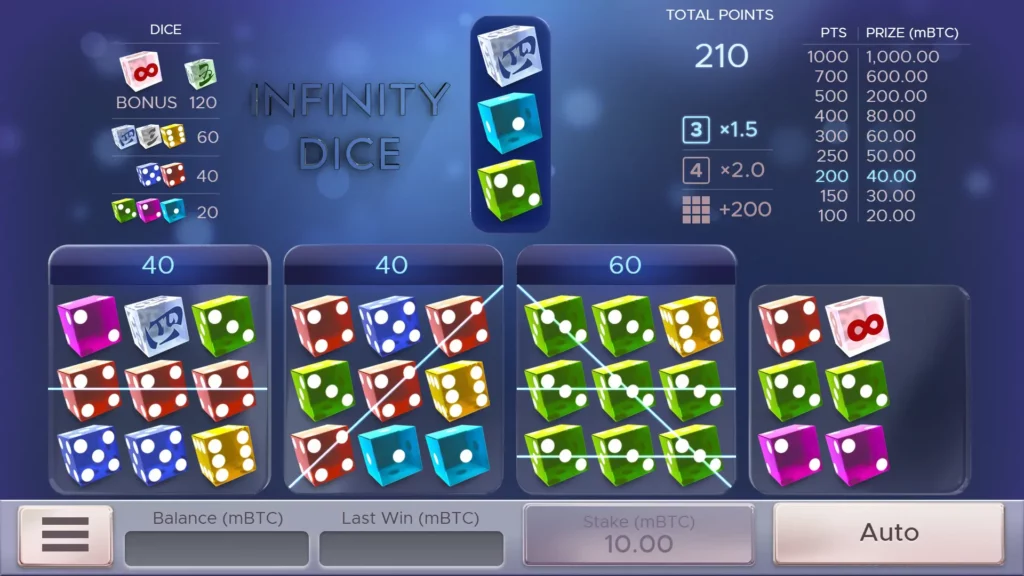The probability calculation behind dice games explained
Dice games are popular in Belgium and recognisable by their dice symbols. There is mathematics behind every game. Probability calculation determines how much you win or lose on average.

Players often feel that they are in control. However, the outcome is determined by probability distribution and RTP. We explain how probability calculation works in dice games.


9,8
PepperMill Casino
Most benefits for players!
How probability works in a dice game
Every dice game has reels filled with symbols. The more often a symbol appears, the greater the chance that you will spin it.
Probability = number of symbols ÷ total number of squares
Suppose: 30 squares per reel and 3 times a ‘dice 6’.
The probability per reel is 3 ÷ 30 = 10%.
A calculation example with three identical symbols
If the probability per reel is 1 in 10, you calculate the probability of three identical symbols as follows:
Probability = (1/10) × (1/10) × (1/10)
Probability = 1/1000 = 0.1%
On average, that means once in every 1,000 spins.
An overview in table form
| Combination | Probability calculation | Probability in percentage | Possible payout |
|---|---|---|---|
| 3 times dice 6 | (1/30) × (1/30) × (1/30) | 0,0037% | 50 x stake |
| 3 times dice 5 | (1/20) × (1/20) × (1/20) | 0,0125% | 20 x stake |
| 3 times dice 1 | (1/10) × (1/10) × (1/10) | 0,1% | 5 x stake |
What RTP means in practice
RTP stands for Return to Player. Suppose a dice game has an RTP of 96%. For every €100 wagered, an average of €96 is returned. The casino keeps €4.
This is a long-term calculation. In the short term, it can be much higher or lower.
Step-by-step explanation to calculate your odds yourself
- Count the total number of squares on the reel.
- Count how often a symbol appears.
- Divide the symbols by the squares. That is the odds per reel.
- Multiply the odds for multiple reels.
- Convert the result to a percentage.
A practical example of expected winnings
Suppose you play 100 spins with a stake of €1 per spin. The game has an RTP of 96%.
- Total stake = €100
- Average payout = €96
- Average loss = €4
Now let’s look at a specific combination. Suppose that a winning combination pays out 20 times your stake.
- Probability of this combination = 1 in 500 (0.2%)
- Expected hits in 100 spins = 100 ÷ 500 = 0.2 times
- Expected profit from this combination = 0.2 × €20 = €4
This means that this one combination yields an average of €4 on 100 spins, but you probably won’t win it every session. If you want to try it yourself, many casinos offer demo versions.
Why players think they have influence
Some dice games let players decide where to place the dice. This makes it feel like you are playing strategically.
In reality, the odds are predetermined. The feeling of control makes the game more exciting, but does not change the calculation.


9,8
PepperMill Casino
Most benefits for players!


9,5
BeCasino
New kid on the block.


9,6
Golden Palace
Top destination




